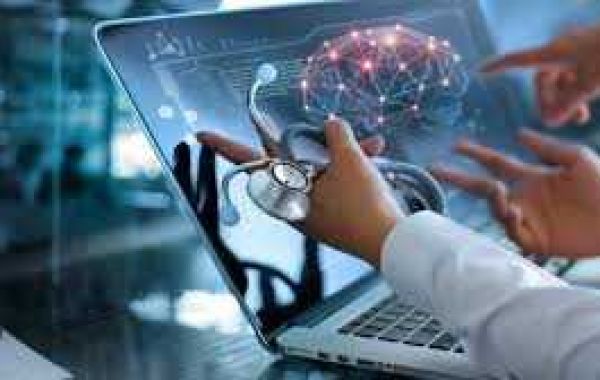1. AI and Machine Learning Integration
One of the most significant trends in EHR software development is the integration of artificial intelligence (AI) and machine learning. These technologies enable EHR systems to analyze vast amounts of data quickly and accurately, leading to better clinical decision-making. AI-powered EHRs can predict patient outcomes, suggest treatment plans, and identify potential health risks. Machine learning algorithms also help in automating routine tasks, such as data entry and appointment scheduling, thereby reducing the administrative burden on healthcare providers.
2. Telehealth and Remote Patient Monitoring
The COVID-19 pandemic accelerated the adoption of telehealth, and this trend continues to influence EHR software development. Modern EHR systems are increasingly incorporating telehealth capabilities, allowing healthcare providers to offer virtual consultations and remote patient monitoring. EHRs are being designed to seamlessly integrate with telehealth platforms, ensuring that patient data is accurately captured and stored during virtual visits. This trend is crucial in expanding access to healthcare, especially in rural or underserved areas.
3. Interoperability and Data Exchange
Interoperability remains a critical focus in EHR software development. The ability to exchange patient data across different healthcare systems and platforms is essential for providing coordinated and efficient care. EHR systems are being developed with advanced interoperability standards, such as HL7 FHIR (Fast Healthcare Interoperability Resources), which enable seamless data exchange between different healthcare entities. This trend supports the creation of comprehensive patient records, reducing the risk of medical errors and improving overall patient outcomes.
4. Patient-Centered EHRs
As patients take a more active role in managing their health, EHR software development is shifting towards a patient-centered approach. Modern EHR systems are being designed with user-friendly interfaces that allow patients to access their health records, schedule appointments, and communicate with their healthcare providers. Features such as patient portals and mobile apps are becoming standard, empowering patients to take control of their healthcare journey. This trend not only enhances patient engagement but also improves the overall patient experience.
5. Cloud-Based EHR Systems
Cloud technology is revolutionizing EHR software development by offering scalable, secure, and cost-effective solutions. Cloud-based EHR systems provide healthcare organizations with the flexibility to access patient data from anywhere, at any time. They also reduce the need for on-premises hardware and IT maintenance, making them an attractive option for small and medium-sized healthcare practices. Additionally, cloud-based EHRs offer enhanced security features, such as encryption and regular updates, to protect patient data from cyber threats.
6. Advanced Analytics and Reporting
Data analytics is becoming increasingly important in healthcare, and EHR software development is reflecting this trend. EHR systems are being equipped with advanced analytics and reporting tools that allow healthcare providers to gain insights from patient data. These tools can help identify trends, monitor patient outcomes, and improve the quality of care. Predictive analytics, in particular, is being used to forecast patient needs and optimize resource allocation. This trend is crucial for healthcare organizations looking to improve efficiency and deliver value-based care.
7. Enhanced Security and Compliance
With the rise in cyber threats and data breaches, security and compliance are top priorities in EHR software development. Developers are incorporating advanced security measures, such as multi-factor authentication, encryption, and regular security audits, to protect patient data. Additionally, EHR systems are being designed to comply with stringent regulations, such as HIPAA (Health Insurance Portability and Accountability Act) in the U.S. and GDPR (General Data Protection Regulation) in Europe. This trend ensures that patient data is safeguarded while meeting legal and regulatory requirements.
8. Blockchain Technology
Blockchain technology is emerging as a promising trend in EHR software development. By providing a decentralized and immutable ledger, blockchain can enhance the security and transparency of patient data. Blockchain-based EHR systems can ensure that patient records are tamper-proof and that only authorized individuals have access to sensitive information. This technology also facilitates secure data sharing between different healthcare providers, improving interoperability and patient outcomes.
9. Personalized Medicine and Genomics
The rise of personalized medicine and genomics is influencing EHR software development. EHR systems are being designed to capture and analyze genetic information, enabling healthcare providers to tailor treatments based on a patient's genetic makeup. This trend is particularly relevant in fields such as oncology, where personalized treatment plans can significantly improve patient outcomes. By integrating genomics into EHRs, healthcare providers can offer more precise and effective care.
10. Wearable Integration and IoT
The proliferation of wearable devices and the Internet of Things (IoT) is transforming how patient data is collected and utilized. EHR software development is increasingly focused on integrating data from wearable devices, such as fitness trackers and smartwatches, into patient records. This real-time data can provide healthcare providers with valuable insights into a patient's health status, enabling proactive and preventive care. The integration of IoT devices with EHR systems is also improving remote monitoring and chronic disease management.
Conclusion
EHR software development is at the forefront of the healthcare industry's digital transformation. By embracing these trends, healthcare providers can enhance patient care, improve operational efficiency, and stay ahead in an increasingly competitive landscape. As technology continues to evolve, the future of EHR systems looks promising, with the potential to revolutionize how healthcare is delivered and experienced.
Incorporating these trends into your healthcare organization’s EHR strategy will not only ensure compliance with industry standards but also position your organization as a leader in providing high-quality, patient-centered care.







